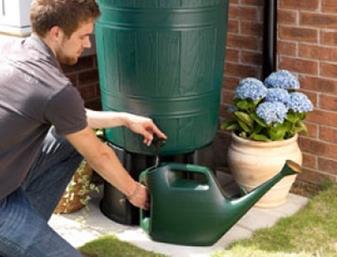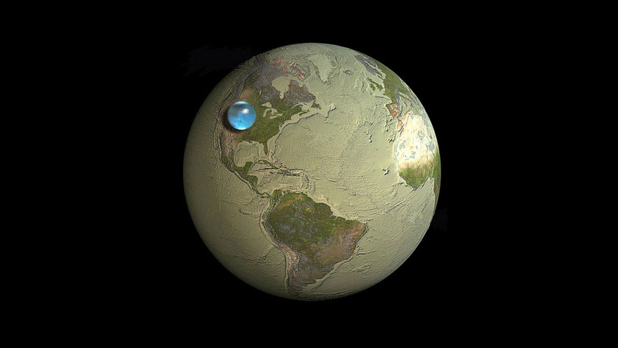If All the 'Drinkable' Water In The World Was Added Up...

Water makes up approximately 71% of the Earth’s surface, yet only 1% of it is safe to drink. Even though Earth is known as the Blue Planet is water really as plentiful as we think? If the Earth was an apple the water layer would be thinner than the fruit's skin.
Compared to the size of our planet a sphere containing all of it’s water is surprisingly small, a meagre 860 miles wide.

Image source - http://gizmodo.com/5909889/awesome-picture-perfectly-shows-how-little-water-there-is-on-earth
Earth's approximate water volume (the total water supply of the world) is 1,460,000,000,000,000,000,000 (1.46 thousand trillion) litres, enough to fill 584 million Olympic sized swimming pools, but this is split into 97% saline and 3% fresh and not all of the latter can be accessed.
- 68.7% of the fresh water on Earth is trapped in glaciers.
- 30% of fresh water is in the ground.
- 1.7% of the world’s water is frozen and therefore unusable.
No wonder the Titanic was doomed when you bear in mind that the largest iceberg is 31,000km2, roughly the size of Belgium and the tallest is 167m high. Conversely water has been found in tiny amounts, trapped in Quartz grains; not really useful to us for drinking but an important insight into the ancient world. We also shouldn’t forget the water holding capacity of the human body, which is between 55 to 78% water! The human brain alone is approximately 75% water, bones 25% and blood 83%.
Water is used in many ways in modern society, aside from simply drinking water and washing with it, we also need it for transport, recreation, industry, hydro-electric power and agriculture. Earth has a closed water cycle, with the amount of water remaining the same, so we have to be considerate of the fact that by polluting water supplies we are facing the question of whether we could end up with a shortage of drinkable water. We can all do our part to reduce the amount of water we consume on a daily basis, since the amount of water we use is far higher than the amount we actually need.
An often overlooked issue is the amount of water used in production of day to day items, like food and clothing, meaning that our daily consumption of water is far beyond what we use to flush the toilet.
- A new car take 148,000 litres of water to produce.
- It takes 12,942 litres to produce a serving of chocolate.
- A pint of beer takes 170 litres.
- 8,182 litres are needed to grow the cotton to make one pair of jeans.
If you want to try and save the water on our planet you can start at home and there are numerous ways to do so, from turning the tap off when brushing your teeth to installing a device in your cistern to reduce the amount of water used per flush and stopping pouring fats down the drain, causing unnecessary contamination. However one of the most useful ways to make a difference is by installing a water butt to save rainwater collected by guttering, this can then be used for general outdoor tasks like watering your garden or washing your car, without the fear of the water meter spinning off the wall.
So the next time you take a trip to the coast or go for a walk around a lake remember that although we live on a Blue Planet, we need to take care to keep it that way.








